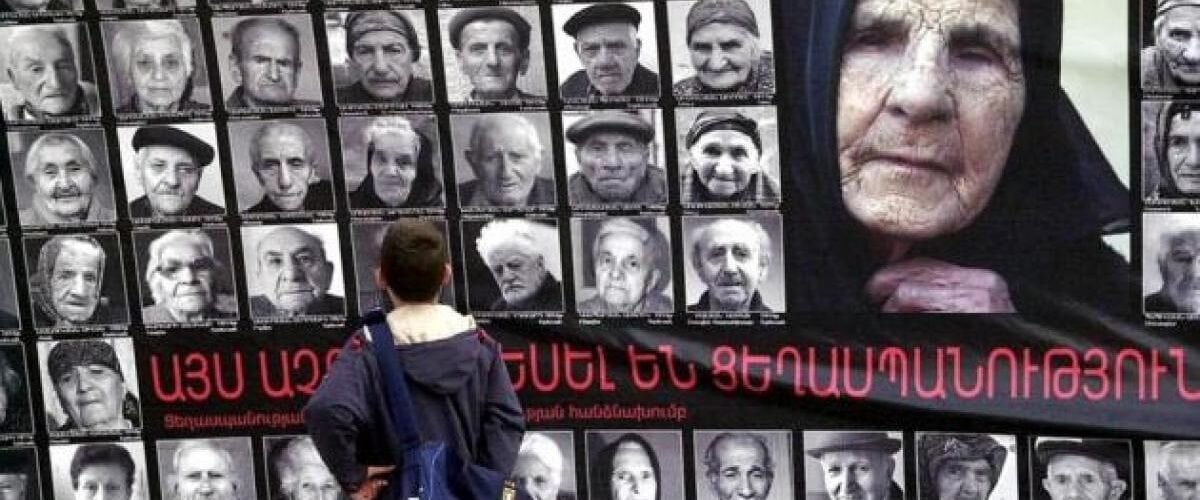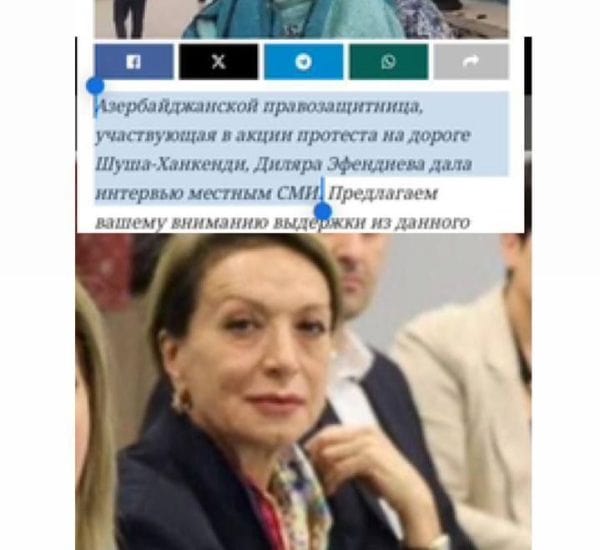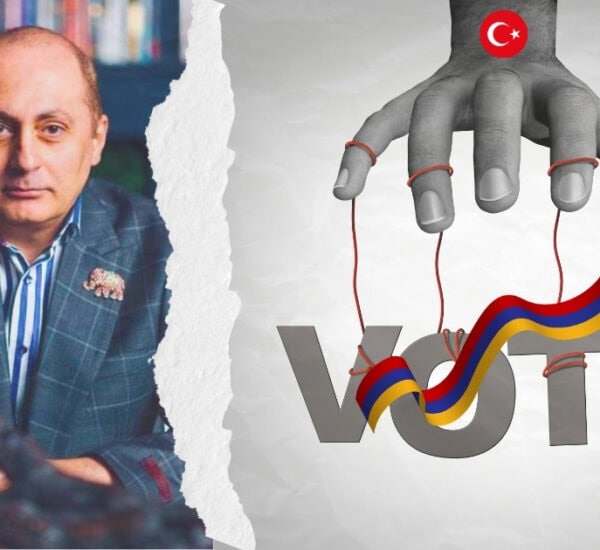“If the Earth becomes a graveyard, the last one to lay a flower will still be an Armenian.”
Hrant Matevosyan
This is how the renowned writer described his admiration and love for his people and his country. If we look back and study the history and journey of the peoples of the world today, we will confidently notice that very few of the ancient nations have managed to preserve their existence and survive into the 21st century. The Armenian people belong to this unique group of nations.
For centuries, this nation, carrying out its rightful struggle, has continued to strive and fight for a corner under the sun. The Armenian people, throughout their history, have experienced numerous rises and falls, fighting to establish and preserve their religion, faith, and national identity.
Almost all pages of Armenian history are stained with blood; even today, the nation continues to stand strong at the cost of the lives of its children. Boundless love for the homeland, unwavering faith in God, and a hope for a good life kept alive even in dark times have spread light over an uncertain future. Armenians are among the oldest peoples in the world, and Armenia is among the oldest countries.
On the stage of history, many peoples have come and gone—vanishing without a trace and forgotten in the whirlwind of events. Yet Armenia has remained firmly rooted in its land. The relationship of the Armenian people with neighboring countries has, to put it mildly, never been friendly.
But no nation has been filled with as much hatred toward the Armenian people as the Turkish nation. The key reason and motive behind this hatred remain a mystery to the Armenian people to this day. It was precisely this relentless hatred that triggered the mass slaughter in 1915.
The beginning and motive of the Armenian Genocide
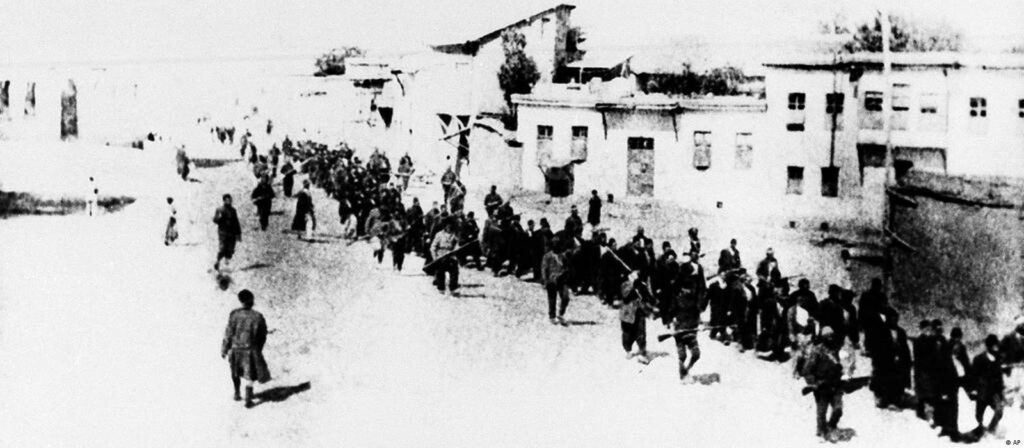
In 1915, the world was living through one of the bloodiest periods in its history—the horrific phase of World War I. The great powers were at war with each other, each striving to become the ruler of the world.
The Armenian people, lacking a state and being a pawn in the hands of these great powers, did not yet know that they were about to experience the bloodiest period of their history.
The Young Turks, who had come to power in the Ottoman Empire, had meticulously planned and prepared the deportation and massacre of the Armenian population living in the Ottoman Empire and Western Armenia.
The Armenian genocide was carried out in several phases: the disarmament of Armenian soldiers, deportations, and then mass killings.

Theoretically, the massacres had begun as early as 1894, but they were carried out on a large scale starting in 1915. The Ottoman Empire, trying in every possible way to preserve the remnants of its weakened state, adopted a policy of Pan-Turkism, aiming to expand the country’s borders as far as China, incorporating Turkic-speaking peoples and creating a “Greater Turkey.”
The Armenians were considered a real and genuine threat and an obstacle to the implementation of this political plan.
The Ottoman Young Turks used the context of World War I to later present their horrific acts to the public as defensive military operations during the war. After all, who thinks about or cares for the innocent lives lost once the war is over?
The plan for the massacre included mass arrests, which began in Constantinople on the very first days of the killings. Among those arrested were influential Armenians, mostly intellectuals and artists, who held prominent positions in society.
The second phase began with the conscription of 60,000 Armenian men into the Turkish army, where they were supposed to fight for Turkey. These 60,000 Armenian men were later brutally and treacherously killed by their Turkish comrades-in-arms.
The third phase of the massacre involved the deportation of Armenian women, children, and the elderly to the Syrian desert, where they were also killed. Most died along the way from hunger, exhaustion, and suffering. Many women and girls were subjected to sexual violence. Dozens of Armenians were forcibly converted to Islam.
The genocide of the Armenian people, in terms of human lives lost and physical suffering endured, occurred in three main phases. However, it is the last phase that gave rise to impunity and has become the cause and motive for subsequent atrocities worldwide. The last phase involves the total denial of their inhumane acts, massacres, and mass killings by the Turkish government even to this day.
Using its anti-Armenian propaganda machine, the Turkish government tries in every way to portray what happened as mere wartime actions. Meanwhile, the world, through its indifference, contributes to this, failing to realize that any impunity gives rise to new and even more horrific atrocities.
April 24 as a Day of Remembrance for the Genocide
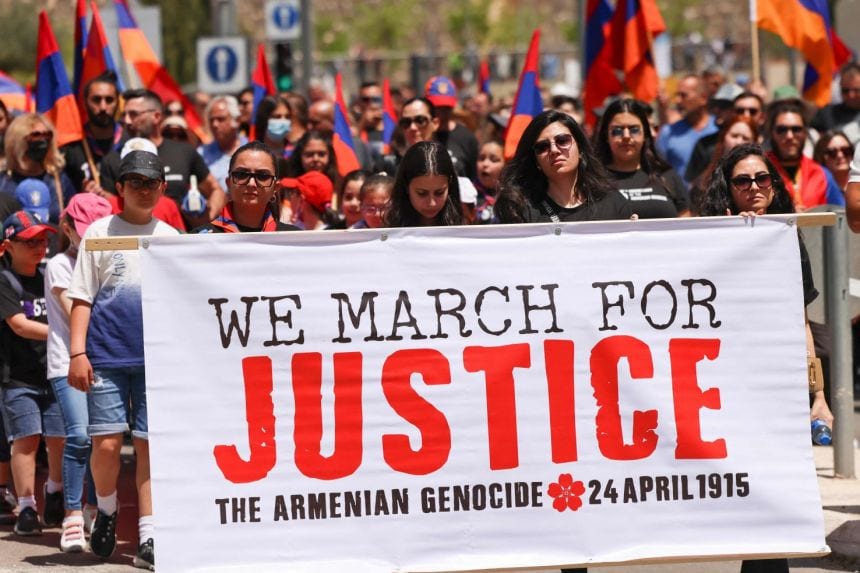
April 24 is observed as a day of remembrance for the innocent lives lost in the first genocide of the 20th century. On this day, every Armenian, wherever in the world they may be, commemorates it with deep sorrow and heartache, harboring in their hearts a desire for justice. Few know why April 24 was chosen as the day of remembrance.
On April 24, Armenian intellectuals were arrested and brutally killed. In the primary phase of the Ottoman Empire’s plan, Armenian intellectuals were the main target, because a nation without its intellectuals is doomed to destruction and erasure.

That is why April 24 was designated as a day of remembrance. Life itself has proven that the Armenian people are naturally gifted with producing geniuses, and despite the fact that nearly two hundred Armenian intellectuals were killed during the Great Genocide, the Armenian people have still given the world many other great intellectuals, thanks to whom Armenian art, culture, and history have become audible and recognized worldwide.
Among the victims of the Great Genocide were such prominent Armenians as Daniel Varujan, Grigor Zohrap, Siamanto, Ruben Zardaryan, and many other notable figures. Komitas, the Mesrop Mashtots of Armenian music, seeing all this, went mad and eventually died in a psychiatric hospital in Paris.
The denial or impunity of the massacre of the Armenian people gives rise to even more horrific crimes.
After the end of World War I, the surviving and displaced Armenians scattered across different parts of the world undertook a universal struggle—to publicly raise awareness of the atrocities committed and to appropriately punish those responsible on a global scale.
However, the poor Armenian people had yet to realize that their struggle would extend over a century, without receiving the justice and reparations they deserved.
The Armenian Genocide Day was first officially observed in 1965 in Soviet Armenia, on the 50th anniversary of the Great Genocide. To this day, the entire Armenian nation continues to await justice and reparations. Yet the world seems to have closed its ears, unwilling to listen or hold the perpetrators accountable.
The impunity for the atrocity committed against the Armenian people laid the groundwork for the second catastrophe of the 20th century—the massacre of the Jewish people.
Before the 1939 invasion of Poland, German commander Adolf Hitler addressed his army with the words: “Strike, strike—after all, who remembers the Armenian Genocide?” Any unpunished act, as a rule, gives birth to another, even more terrible and brutal act.
Yet see that the massacre of the Jewish people was massively condemned, acknowledged, and recognized by the world, and the Jewish people were presented as suffering victims and became a symbol of World War II. So why did the world sympathize with the Jews but turn a deaf ear to the Armenians’ appeal?
The answer is more than obvious: political interest. The world’s great powers united around the goal of punishing Germany and used the Holocaust to bring Germany to its knees and destroy it.
The German people and government were labeled as aggressors and perpetrators, while the Jews were seen as the suffering victims. Against this backdrop, the Armenians’ tireless efforts remained fruitless and unanswered. So what was left to do? Of course—take justice into their own hands.
Seeking Justice Through One’s Own Path
The Armenian Genocide has several symbols—real people represented through their actions. Any Armenian in the world, upon hearing the name Soghomon Tehlirian, is filled with immense pride and admiration. Tehlirian is the embodiment of vengeance, who did something that, at the time, seemed impossible.
Understanding that achieving justice through diplomatic channels was impossible, the Armenian avenger decided to take justice into his own hands and punish one of the main organizers of the genocide, Talat Pasha, who was then in Berlin. Soghomon was a survivor of the genocide and had witnessed the slaughter of his family. Participating in the “Nemesic” operation, he was tasked with assassinating Talat Pasha.
In the Charlottenburg district of Berlin, with a single shot from his pistol, Tehlirian killed the perpetrator, becoming a symbol of vengeance for the Armenian people. Tehlirian was later acquitted by the German court.
Traces of the Genocide into the 21st Century
The Turkish nation, which has harbored deep hatred toward the Armenian people to this day, continues to live with it in its heart—uniting even Azerbaijan around this idea. It seemed that the struggle for its existence had ended with the Armenian people, yet time has shown that the Turkish nation does not waver in pursuit of its goal and has not forgotten its ideology of Pan-Turkism.
Perhaps in the 21st century it would be somewhat difficult to carry out a direct massacre against the Armenians, so Turkey has decided to do it through Azerbaijan. The main “patron” of the 2020 Armenian-Azerbaijani war was Turkey, which continuously armed its brotherly neighboring state and sent it to destroy the Armenian people, using the Nagorno-Karabakh issue as a pretext. The majority of Azerbaijan’s armaments came directly from Turkey.
Directly, the main instigator of the war is Turkey, which for centuries has pursued only one goal—to eliminate the Armenians from the Caucasus region and unite all Muslim peoples.
On the path toward its long-standing dream, Armenia and the Armenian people are like a piece of bread stuck in its throat, refusing to be swallowed. For this reason, Turkey uses an alternative route—employing Azerbaijan as its tool.
The Turkish propaganda machine still denies the genocide that occurred and portrays Armenians as an aggressive nation. Despite a century-long struggle, the Armenian people have not lost faith and continue to hope that the world will not remain indifferent to their pain, suffering, and torment.
Generations armed with the cross and the sword, victorious over centuries and undefeated, reaching our days, have the right to witness and enjoy the taste of justice. They have the right to demand punishment for the state that condemned one and a half million innocent victims to a cruel and unjust death.
As a result of the genocide, today 10 million Armenians are scattered across the world—hopeful that one day they will return to the homeland, the homeland that was taken from them over a century ago, a homeland that should see another spring, a spring that remained unfinished and was dyed with the blood and suffering of innocent people.
21st century, 2023, April—All Armenians are still waiting for justice today.
If you want, I can also make a more polished, fluent version in strong English suitable for publication or an article while keeping all the original meaning and emotional intensity. Do you want me to do that?
